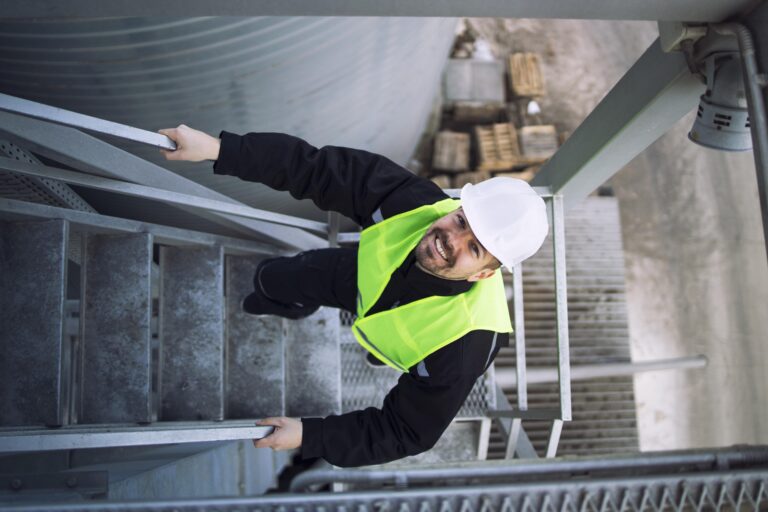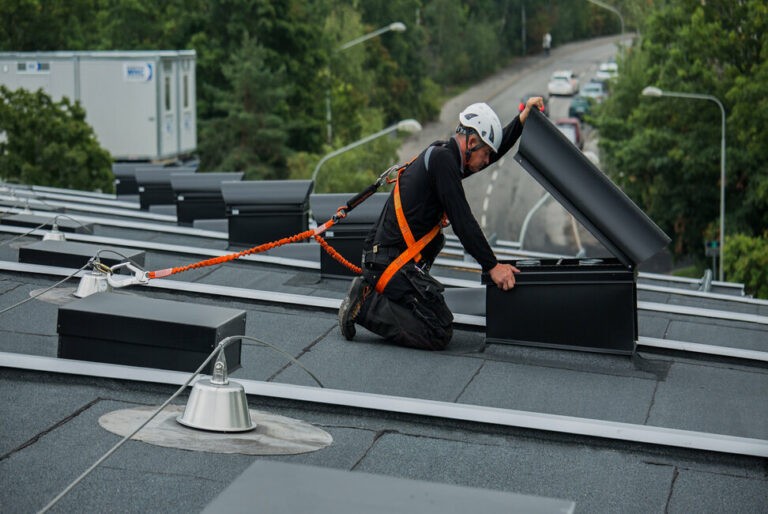As someone who has worked on job sites where safety is a top priority, I’ve seen firsthand how OSHA fall protection violations can lead to serious accidents. Falls are one of the leading causes of workplace injuries, and non-compliance with safety regulations can put workers at risk. Understanding the most common violations and how to prevent them is critical for maintaining a safe work environment.
Here are the top five OSHA fall protection violations and practical steps to avoid them:
1. Failure to Provide Fall Protection (OSHA Standard 1926.501)
This is the most frequently cited violation in the construction industry. OSHA requires that employers provide fall protection for workers at elevations of six feet in construction and four feet in general industry.
How to Avoid It:
- Conduct a thorough risk assessment to identify fall hazards.
- Install guardrails, safety nets, and personal fall arrest systems (PFAS) where necessary.
- Ensure that all employees are trained on proper fall protection measures and equipment use.
2. Lack of Proper Training (OSHA Standard 1926.503)
Many workers are injured because they are not properly trained in using fall protection equipment or recognizing hazards.
How to Avoid It:
- Provide OSHA-compliant fall protection training for all employees who work at heights.
- Conduct regular refresher courses to keep workers updated on best practices.
- Ensure that training records are kept up-to-date and accessible.
3. Improper Use of Ladders (OSHA Standard 1926.1053)
Ladders are commonly used on job sites, but improper use leads to many accidents each year.
How to Avoid It:
- Use the right type of ladder for the task at hand.
- Ensure ladders are placed on stable, level ground and secured to prevent slipping.
- Train employees on safe ladder practices, including maintaining three points of contact when climbing.
4. Unprotected Roof Edges and Openings
Unsecured roof edges, skylights, and floor openings pose significant fall hazards if not properly protected.
How to Avoid It:
- Install guardrails or safety net systems around unprotected edges.
- Cover floor openings with secured materials that can support the required weight.
- Require workers to wear harnesses and lanyards when working near open edges.
5. Failure to Inspect and Maintain Fall Protection Equipment
Even if the right fall protection equipment is provided, failing to inspect and maintain it can lead to serious failures.
How to Avoid It:
- Conduct regular inspections of harnesses, lanyards, and anchor points to ensure they are in good condition.
- Remove damaged or worn-out equipment from service immediately.
- Assign a competent person to oversee fall protection equipment maintenance and inspections.
Conclusion
Avoiding these OSHA fall protection violations isn’t just about compliance—it’s about keeping workers safe. By ensuring proper fall protection training, using the right equipment, and conducting regular inspections, employers can create a safer work environment and reduce the risk of falls. Remember, a proactive approach to safety can save lives and prevent costly OSHA fines.
If you work in construction or any industry where fall risks exist, take the time to assess your current safety measures. Are you doing everything possible to protect your workers? If not, now is the time to take action.



